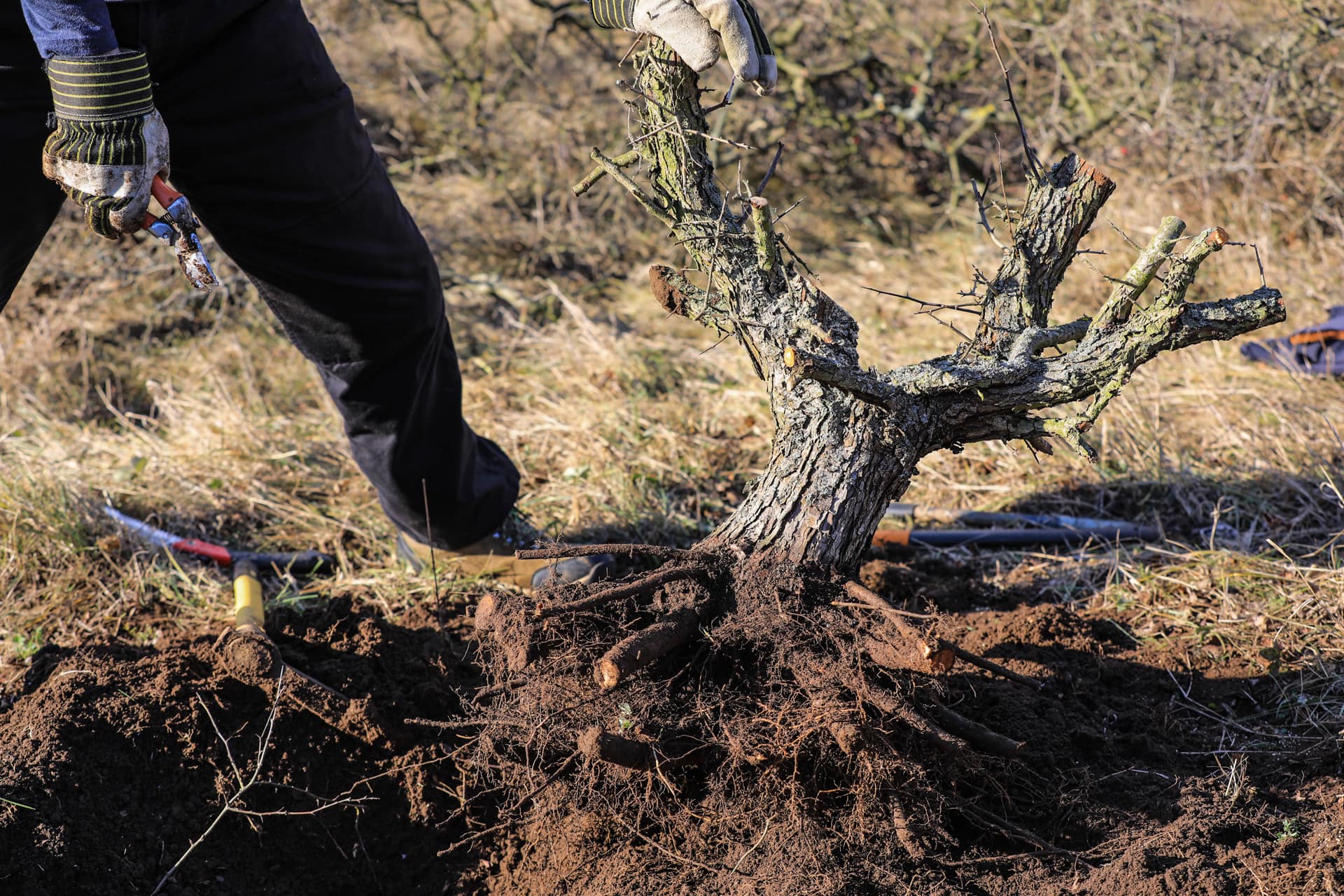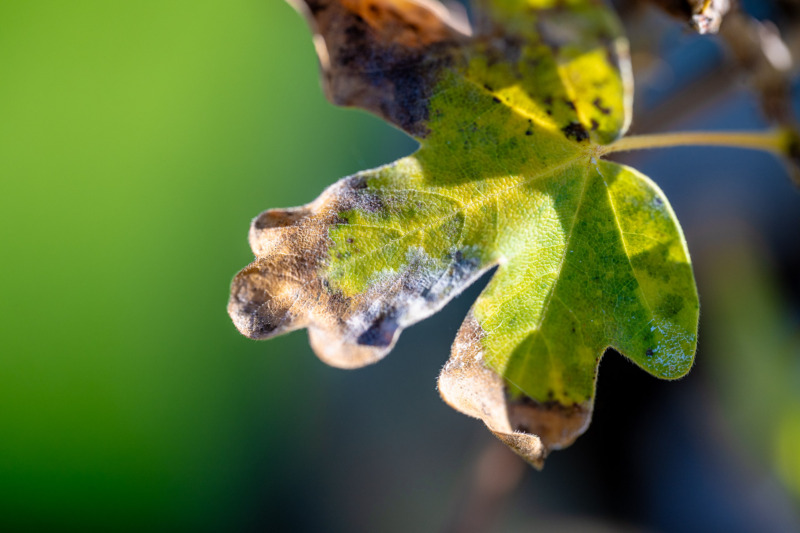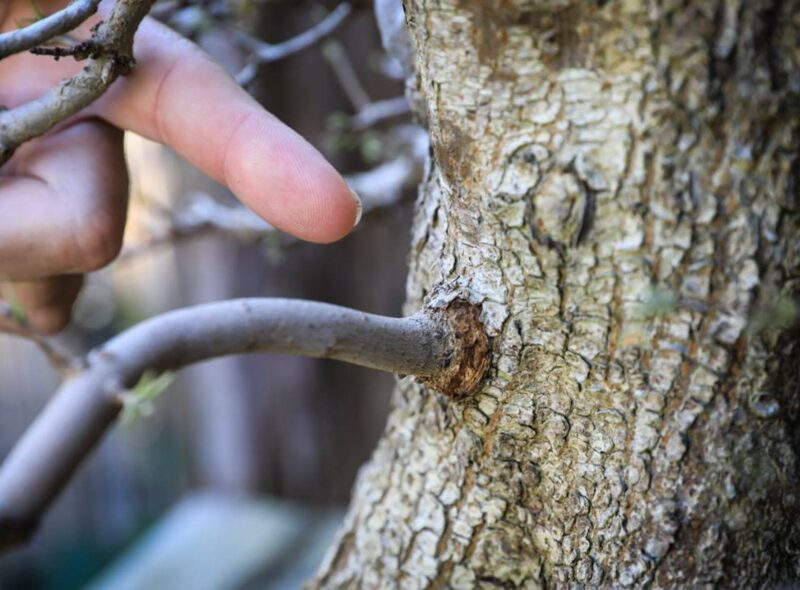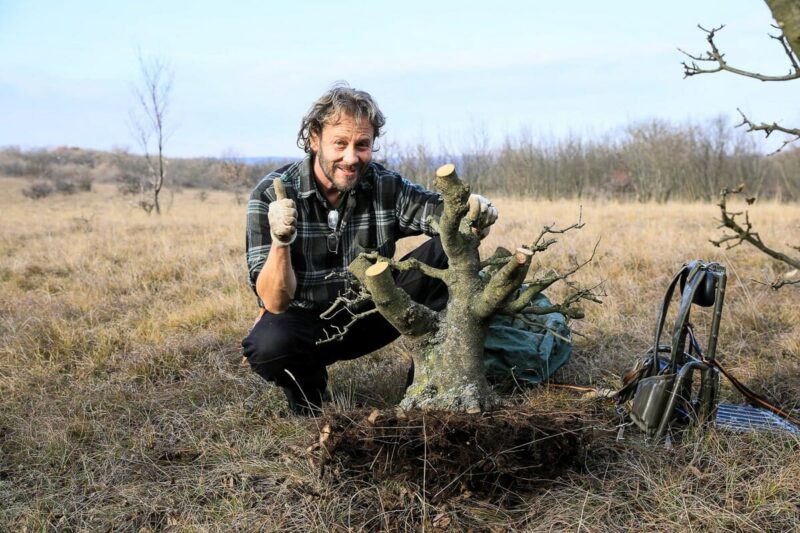Categories
Tags

There is actually nothing wrong with collecting per se. Provided that you primarily keep the written rules of nature conservation and, of course, the unwritten rules. The respect and permission of the owner on whose land you are collecting, if possible. Unfortunately it is usually the case, that there are some very eager collectors who do not follow these rules in any way.
Added to this is the inexperience of the inexperienced yamadori collectors, which of course plant and usually also the reputation of the collectors, who under consideration the unwritten as well as written rules. The worst condition for collecting yamadori is Inexperience in digging and pure owner thinking.
For bonsai collectors for whom this appliesit is better to buy a to buy a collected tree. In den letzten Jahren haben sich einige Bonsai-Fachgeschäfte, neben den herkömmlichen Bonsais, auch specialized in Yamadori raw materials. Vor allem in Deutschland. When buying a Yamadori, please note that you should that you can trust the dealer that the tree is well is well rooted. Unfortunately, due to because of the profit marginsalso charlatans among the dealers, because a Yamadori pine, for example, needs at least 3 years of care until it is well rooted.
Deciduous trees, on the other hand, can be one year. Aber auch da gibt es Ausnahmen. Sometimes a tree is sold immediately after it has been collected. Coveted collector’s items are mostly native coniferspreferably from the high mountainsas well as some deciduous trees such as, hornbeam, copper beech, oak, dogwood, hawthorn etc. One could of course point to tree nurseries. Aber leider ist das Baumschulmaterial not so expressive like trees from nature. Especially when they are grow in extreme locations.
Before you start start collectingyou should at timeswhen collecting collecting is not possiblethe collecting area scout. Dabei kann man schon vorab eine Make a decision which trees may come into question and it does not come to uncontrolled diggingas a fear reaction that you go home empty-handed. The best time for this is usually the early or late summer. When is the best time to collect iscan be very different. It always depends onwhich species you collect, deciduous trees can be in the fall.
But then they would have to be frost-free in winter. Ausgenommen sind Oaksthat you can only dig up in spring. Maple and hornbeam can be in the fall, from the Time of juice withdrawal (leaf fall) and you also have a good chance of getting them through. For the conifers the time of the Excavation from the Late summer to spring.
For the mountain pine Pinus mugo, according to information from experienced collectors, the best time September to October. Bn the case of Scots pine Pinus sylvestris and black pine Pinus nigra, early spring is early spring is best suited. Most problems with the larch. Einige Sammler bevorzugen den fallwhile others swear by spring.
Basically determines the time of excavationfor larch in particular, the altitude at which the larch is after harvesting. The higher the excavation site of the larch, i.e. high mountains. All the more The time of excavation is more important. If you live in and around Viennafall is is the best time. Spring would therefore not advisablebecause larches like deciduous trees only only after the sap has retreated to ensure their survival, therefore during the dormant season.
In spring, digging is only after the the snow melts. Das kann im Hochgebirge erst im Mai sein. In the valley it is at this time already very warmbut in the high mountains it is still still winter. Diesen rapid temperature difference the larch usually cannot. If the 500 m above sea levelyou can also collect collect larches in spring. The different collection times and the physiology of the of the collected plantrequires quite a bit of knowledge.
In addition, what you have to consider when digging. Basically, it is important for the survival of the plantas many fine roots as possible. With the size of the excavation diameteris always based on the circumference of the tree’s crown. Once the circumference is determined, dig dig from the edge down to the center of the tree. The Keep the root ball as compact as possible and do not completely remove the original soil Free.
Is the ground is very stonywhich usually occurs in the mountains, so the exposed roots with water. Therefore, always take enough water with you. To ensure that a tree really has a compact root ball to be able to excavategood equipment is essential. It benefits neither the plant nor the collector, when you go into the mountains with just a folding spade. You also have to for every situation the right tool have at hand.
This includes a small pickaxe, a carpenter’s hammer with a flattened flattened sidethe aforementioned folding spade, various sharp cutting tools such as secateurs and pruning shears. Because the the cleaner a root is cut offthe faster the healing healing progresses. So wie eine Klappsäge mit Spare bladea small bearing can also be helpful in be helpful in many a situation. Im Hochgebirge ist, wegen dem steinigen Untergrund, auch eine Brechstange von Nöten. Once you have the tools together, you must not forget the packaging material.
Also enough waterfor itself, as well as for the care of the tree. But the whole thing must also be reasonably be more or less convenient to transport. This includes a appropriate hiking rucksackthat is equipped with good carrying straps. Für die SafetyIf you are excavating on somewhat steeper slopes, you should also a rope. So, all in all a lot of equipmentto be able to excavate successfully.
Once once a tree has been dug upyou have to the roots as quickly as possible from from drying out. The best way to do this is to use a flowthat is also used in used in tree nurseries as a base. Damit packt man den Wurzelballen gut ein, verschnürt ihn mit a string and moisten the entire root ball well. Das ganze wiederum wird noch in einer Plastikfolie eingepackt, damit das Water cannot evaporate. If no flow is available, then sphagnum moss or moss cushion which can be found everywhere in the high mountains, is a good water reservoir and protects the roots from drying out.
Still at the excavation site you cut away the brancheswhich are used for the later design in no case needs. This helps the tree in the Spring budding save poweras he usually uses a lot of his root volume has been lost. Once the tree has been cared for, it is the duty of every collectorthe resulting hole like this as well as possible. Especially in the high mountains it is from greatest importance the cavity of the through the Excavation originated is so to stuffthat there is no landslide, when it rains heavily. The best thing to do is to carefully remove the grass surface beforehand and put it back in place to prevent any subsequent damage. Soil corrosion to prevent.
You should not collect at the wrong time of year. Oft hört man, das der Bonsaienthusiasmus so weit geht und man im Summer vacation during a mountain hike pine or larch tree during a mountain hikebecause you you can’t get there in the fall. Such trees are usually doomed to die. But even if the season is right and you notice under the excavationthat most of the roots have grown grown into a rock are. So it is best for the tree to be left in its original place, because it would also have No chance without enough roots.
Conifers in particular are often collected by inexperienced collectors with almost no roots dug up. But it is precisely these that absolutely need to match the green mass, sufficient fine roots. Alleine schon um das vorhandene Grün zu versorgen. Even if you you are lost in a tree but find that the tree is in poor health is in a poor state of health has. The tree is certainly no better off when you dig it up. Trotz anschließender Optimalversorgung, wird die Pflanze die Do not survive the ordeal.
In such a case the plant is given the chance to recover at the site. recover. Womöglich düngt man mit organischem Dünger und eventuelle Zugaben mit Vitamin B1. The same applies to trees growing on a growing on a steep slope. Diese Bäume sollte man in leave it in any caseif no other tree grows next door which helps to secure the slope with its root system. Gräbt man solche Bäume aus, so ist damit zu rechnen das at the latest when rotting of the remaining part of the slope can slide off.
Large trees are also dug up for later bonsai design. An experienced collector prepares the tree for its final destination. This is done by cutting off the strong roots in the springso that the tree can to form new fine roots near the trunk by the following spring. With pines and larches this preparation can take can also take 2 years. A plant like juniper should be left in any case. In der freien Natur bildet der Wacholder sehr lange Wurzeln aus und in Stammnähe befindet sich fast keine Feinwurzelverzweigung. Eigentlich gehen 95% of all excavated junipers.
If you are still inexperienced in collecting yamadori without experienceso you first need a feeling for and and above all a feeling for the plants you want to dig up. Therefore you don’t start with the most delicatethe conifers, but start with deciduous trees. Auch Kenntnisse über die Characteristics of the rooting of different tree species is important. Whether a tree is a shallow rooter like the Scots pine or black pine or has a deep taproot like the oak, for example.
You should also know about the nature of the roots of different tree species. There are very dense and fine root systems such as the maplebut also a very bulky one, which can be found in a Hawthorn or dogwood occurs. To really get an idea of which root system a tree might havecan, for example the indication of branching. If a tree or bush is bulky branched, the root system is usually the same.
So with most trees you can guess from the branching which root system awaits you when you dig them up. The most important rule when collecting of Yamadori is always start with the tree and not against the tree. If you follow this rule, you have taken a first step in the right direction. In any in any case you need, as with the bonsai design, you need a large portion of patience to collect yamadoris.
If you have followed this lecture seriously and think it will work even if you have not prepare so thoroughly. You would certainly be better advised to buy a Yamadori material.

Category
Editor

Category
Editor

Category
Editor